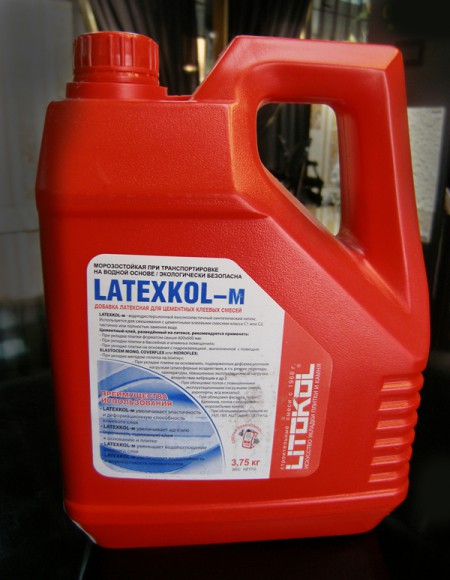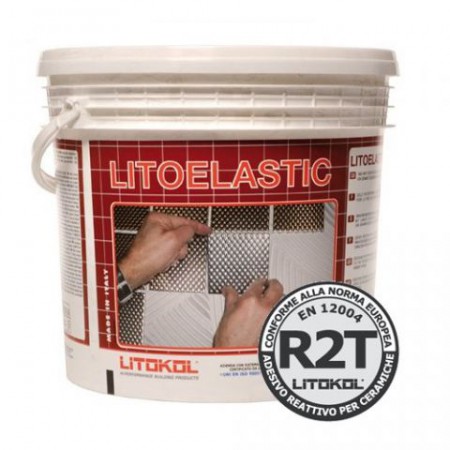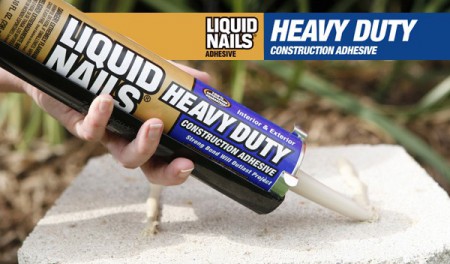How and how to glue glass mosaic tiles on a plywood base?
I want to glue the glass mosaic tiles onto the lacquered plywood arch. I bought glue K55 Litoplus. I decided to try and applied a thin layer on the surface of the arch, but after drying it was easily washed off with a wet rag. Tell me how and how to glue glass mosaic tiles on plywood?
When facing wood, metal, rubber, drywall are special, “uncomfortable” surfaces. Wood is a “living" material that responds to changes in humidity in the room. Losing moisture in the summer or winter when the heating is running, it is compressed. In the off-season, with high humidity, on the contrary, it increases in volume. Therefore, tiles cannot be glued onto a wooden base with traditional water-based cementitious compositions; an adhesive with high elasticity is needed. Plywood is a multilayer material, it doesn’t react so vividly to changes in humidity, and if the surface is properly prepared and glue is chosen, this is a satisfactory basis for finishing with glass mosaics.
How to choose glue for gluing mosaics on plywood
Glue for working with glass mosaic must meet the following requirements:
- it is necessary to be white so that the color and structure of the base are not visible through the transparent and translucent tiles;
- be labeled “for use with glass, translucent and transparent mosaic tiles”;
- be marked on the marking of the place of use: facade work; Living spaces; Bathrooms and pools decoration of furniture and interior items.
All these criteria fully comply with the three types of bite for working with glass mosaics.
White cement-based adhesives
These are well-proven dry mixes of Italian production LITOPLUS K55, CERESIT CM 115, IVSIL Mosaic (MOSAIK) and some others.
When gluing glass mosaic tiles on a plywood base, dry cement mixtures can be used if:
- the size of the mosaic fragments does not exceed 5x5 cm;
- instead of water, a liquid latex additive of the same manufacturer is used as a diluent.
In your case, the dry component of LITOPLUS K55 glue must be diluted with Latexkol-m liquid latex additive. It will significantly improve the adhesion of the adhesive to the base, make the adhesive layer elastic and give it the necessary water resistance.

Reactive epoxy and polyurethane adhesives
These are ready-made two-component polyurethane adhesives LIIELASTIC and Mapei Keralastic T, two-component epoxy adhesive Sopro DBE 500 and others. The entire group of reactive adhesives is distinguished by high elasticity, water resistance, and the ability to level surfaces. They are suitable for gluing glass mosaics on any surface, including wood, plywood, rubber, etc. The only drawback is the high price, often twice and three times the cost of dry mixes.

Liquid Nails
Glues of the “liquid nails” group belong to expensive materials, but they are a universal means for gluing any materials to any substrates, including wood and plywood. Adhesives of this type, such as Cerabond T, Moment universal and Liquid Nails LN 604, are suitable for facing small surfaces with glass mosaic.The full hardening time of “liquid nails” depends on the thickness of the layer, room temperature and is 12-24 hours.
Preparing plywood for tiling
The strength and durability of the mosaic finish equally depends not only on the correct choice of glue, but also on the thorough preparation of the base. In your case, it is necessary to completely remove the varnish coating from plywood and sand the surface. Before applying glue to the substrate, several layers of primer must be applied.

The PRIMER C primer of the same brand is perfectly combined with the LITOPLUS K55 adhesive you already have. It is designed for loose and porous surfaces, penetrates deep into them and creates a durable waterproof film on the surface and increases the adhesion of the substrate with glue.
We hope that our tips will help you create a beautiful and durable mosaic covering of the arch.




